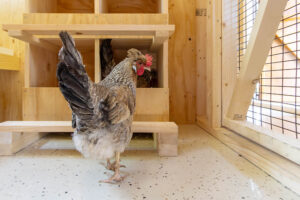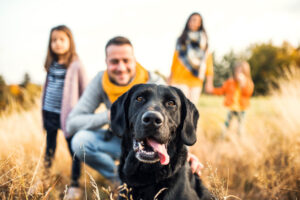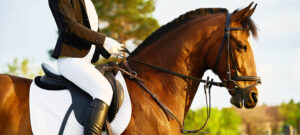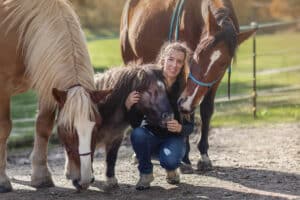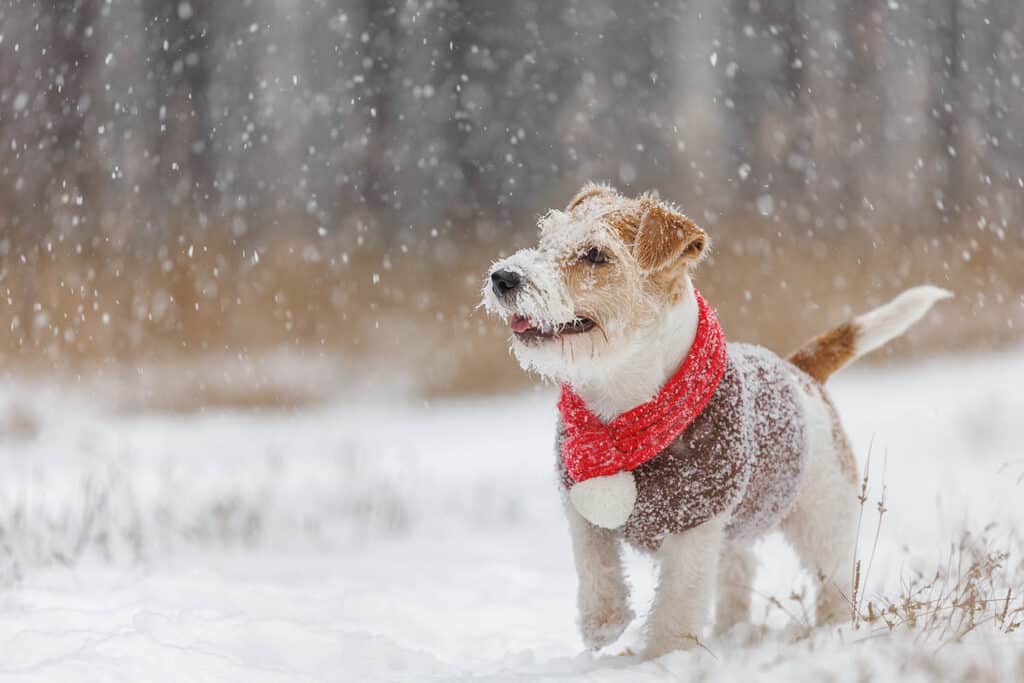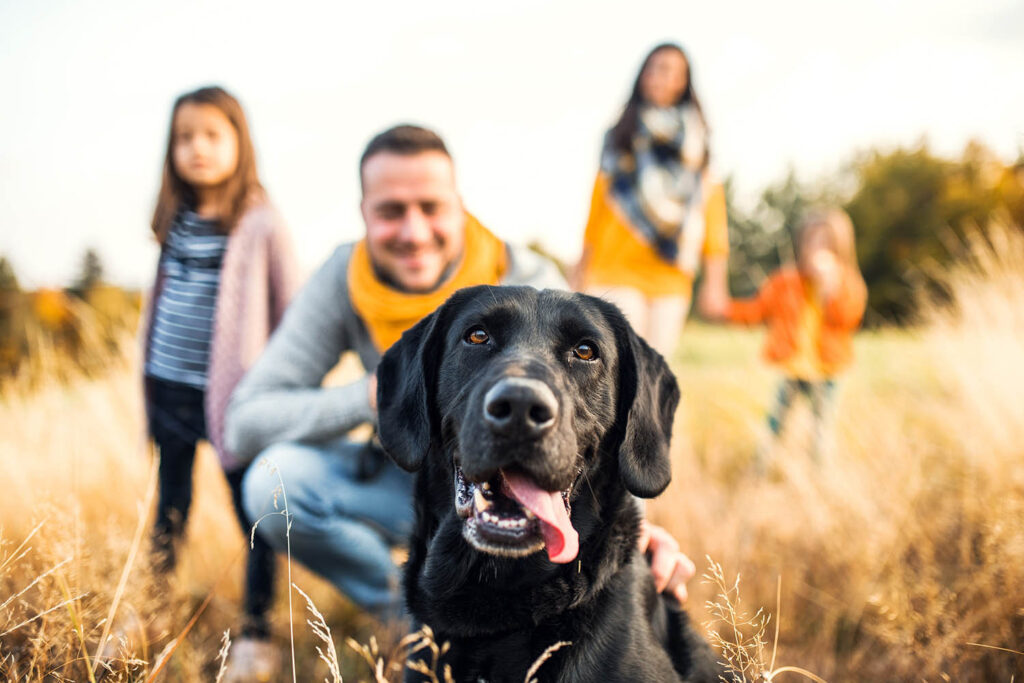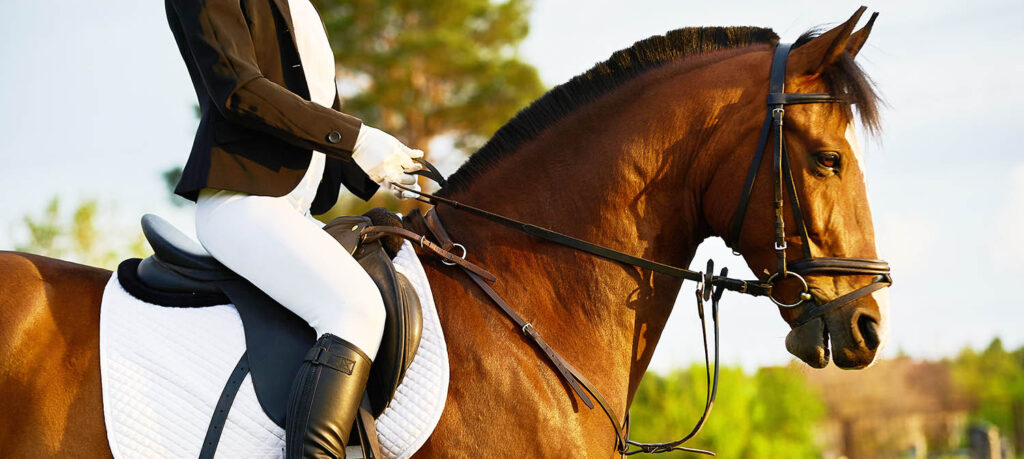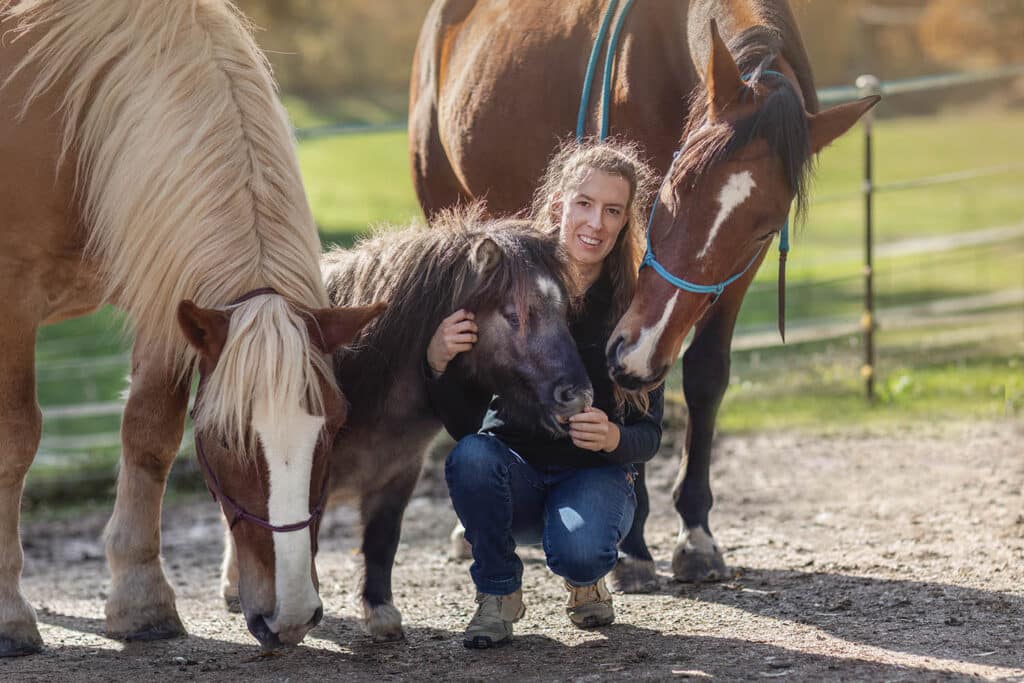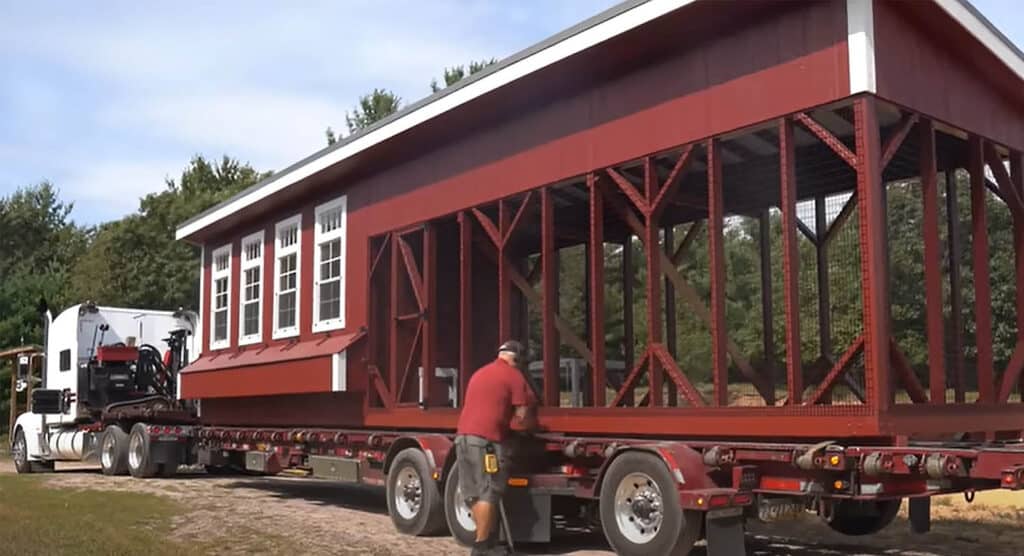Shelter dogs are typically going through one of the most difficult times in their lives. They are in a strange new place and have lost the families they’ve known so far. Shelter and animal rescue staff who are trying to make these dogs as comfortable as possible often find themselves with too few resources and too many dogs.
Substantial kennel time is necessary for most shelter dogs. There is typically not enough staff or volunteers to supervise dogs in multi-dog playgroups or out in play yards.
Until dogs are better known and can be placed into lower-security areas or foster homes, it is essential that they are kept in secure animal shelter dog kennels. Too many shelters and rescues treat kennel time as a necessary evil of animal sheltering, but in fact, kennel time can be used as a time to enrich shelter dogs’ lives, train positive behaviors, and learn invaluable information about each dog.
Here are some dog shelter ideas on how to make kennel time as enriching as possible:



 Once all dogs are on one side, the other side can be seamlessly cleaned without bothering the dogs with the smells or sprays from cleaning products. The staff doesn’t have to worry about being very close to potentially aggressive dogs and dogs aren’t stressed by having to be near staff.
When the guillotine doors are left open, dogs can choose to be on either the inside or the outside, allowing them to choose whether they want to interact with the public or not. Typically, they enable outside space as well as indoor space, which encourages positive potty habits and gives dogs the opportunity to enjoy the outdoors.
Once all dogs are on one side, the other side can be seamlessly cleaned without bothering the dogs with the smells or sprays from cleaning products. The staff doesn’t have to worry about being very close to potentially aggressive dogs and dogs aren’t stressed by having to be near staff.
When the guillotine doors are left open, dogs can choose to be on either the inside or the outside, allowing them to choose whether they want to interact with the public or not. Typically, they enable outside space as well as indoor space, which encourages positive potty habits and gives dogs the opportunity to enjoy the outdoors.

 It’s important to have a doggie door rather than just a guillotine-style opening. The doggie door allows dogs to enjoy going in and out while maintaining climate control in the interior portion.
It’s important to have a doggie door rather than just a guillotine-style opening. The doggie door allows dogs to enjoy going in and out while maintaining climate control in the interior portion.



 However, inevitably there will be moments when shelter dogs behave in ways that you like, like standing calmly or showing positive social signals. Whenever shelter dogs show these desirable behaviors, volunteers and staff can mark the behavior by giving the dog a signal and a reward.
It’s very helpful to use clickers with shelter dogs since it is a consistent sound across different handlers. A great technique is to hang a clicker and a small pail of treats outside of every kennel.
Place a card explaining what behavior to reward and how to reward it. You may be amazed by how quickly your rescue or shelter changes from a loud, chaotic place to a kennel full of well-behaved dogs.
Provide Food and Treats Through Food Distributing toys
Every dog should always have fresh water and an essential portion of food provided in sturdy stainless steel bowls that can be easily accessed from the outside.
However, inevitably there will be moments when shelter dogs behave in ways that you like, like standing calmly or showing positive social signals. Whenever shelter dogs show these desirable behaviors, volunteers and staff can mark the behavior by giving the dog a signal and a reward.
It’s very helpful to use clickers with shelter dogs since it is a consistent sound across different handlers. A great technique is to hang a clicker and a small pail of treats outside of every kennel.
Place a card explaining what behavior to reward and how to reward it. You may be amazed by how quickly your rescue or shelter changes from a loud, chaotic place to a kennel full of well-behaved dogs.
Provide Food and Treats Through Food Distributing toys
Every dog should always have fresh water and an essential portion of food provided in sturdy stainless steel bowls that can be easily accessed from the outside.

 However, some of a dog’s daily allotment of food along with affordable treats like cooked carrots, sweet potatoes, or chicken should be offered through a food distributing toy.
Sturdy toys like the Kong Extreme can provide dogs hours of enrichment. Chewing on a food distributing toy allows dogs to act out natural instincts like chewing, ripping, and chasing without causing destruction to themselves or the kennel.
It is naturally soothing for dogs to chew and lick, so offering food distributing toys can significantly reduce the anxiety level in the kennel.
However, some of a dog’s daily allotment of food along with affordable treats like cooked carrots, sweet potatoes, or chicken should be offered through a food distributing toy.
Sturdy toys like the Kong Extreme can provide dogs hours of enrichment. Chewing on a food distributing toy allows dogs to act out natural instincts like chewing, ripping, and chasing without causing destruction to themselves or the kennel.
It is naturally soothing for dogs to chew and lick, so offering food distributing toys can significantly reduce the anxiety level in the kennel.




Kennel Design
Every aspect of an animal shelter dog kennel’s design is important when housing homeless dogs. These dogs often have sparse or completely unknown histories and their behavior can be very unpredictable, especially at the beginning. Carefully designed animal shelter kennels can avoid mishaps and help dogs to adjust more quickly.Front to Back Kennels
Because shelter dogs have to spend large amounts of time in the kennel, they need kennels with two separate areas, one for eating and sleeping and one for urinating and defecating. These separate areas are important to maintain potty training habits and cleanliness and to allow staff to clean both sides without having to interact with a potentially dangerous dog. In side-to-side kennels, a guillotine door opens to allow a dog into the room next to it and closes to keep the dog from going back into the other space. This allows staff to clean the area unoccupied by the dog, but it has a few distinct disadvantages:- The dog is still in the room in which the cleaning is going on, which subjects them to cleaning products and doesn’t let them get away from the staff who are cleaning.
- The dog cannot get away from public walking by to view it, which causes stress and makes undesirable behavior more likely.
- Typically do not allow for outside access, so the dog doesn’t get the enrichment of fresh air and sunshine.

 Once all dogs are on one side, the other side can be seamlessly cleaned without bothering the dogs with the smells or sprays from cleaning products. The staff doesn’t have to worry about being very close to potentially aggressive dogs and dogs aren’t stressed by having to be near staff.
When the guillotine doors are left open, dogs can choose to be on either the inside or the outside, allowing them to choose whether they want to interact with the public or not. Typically, they enable outside space as well as indoor space, which encourages positive potty habits and gives dogs the opportunity to enjoy the outdoors.
Once all dogs are on one side, the other side can be seamlessly cleaned without bothering the dogs with the smells or sprays from cleaning products. The staff doesn’t have to worry about being very close to potentially aggressive dogs and dogs aren’t stressed by having to be near staff.
When the guillotine doors are left open, dogs can choose to be on either the inside or the outside, allowing them to choose whether they want to interact with the public or not. Typically, they enable outside space as well as indoor space, which encourages positive potty habits and gives dogs the opportunity to enjoy the outdoors.
Dog Door and Covered Outside Portion
Access to the outside is extremely valuable for shelter dogs. It reduces their stress, improves air quality, and encourages good potty habits. However, it can also make the indoor portion drafty in cold or hot weather. In inclement weather, an uncovered outside portion will expose dogs to snow or rain when they want to go outside. To make the most of the outside portion, it’s best to have a covered run that allows dogs to go outside even when it is snowing or raining or when the sun is beating down.
 It’s important to have a doggie door rather than just a guillotine-style opening. The doggie door allows dogs to enjoy going in and out while maintaining climate control in the interior portion.
It’s important to have a doggie door rather than just a guillotine-style opening. The doggie door allows dogs to enjoy going in and out while maintaining climate control in the interior portion.
Heavy-Duty Fencing and Coverings
Dogs in the shelter system can be both very unpredictable and very powerful. Dogs have been known to rip open chain link fencing, often hurting themselves in the process. Shelter dogs may chew on the metal connection points in the kennel and rip at walls with their nails. A well-designed animal shelter dog kennel makes it immediately apparent to the dog that their destructive efforts won’t have an effect, which will make it more likely that they will focus on their food distributing toy or another appropriate chew toy.- Vinyl wrapping. Wrapping any sort of metal or connected pieces that may be prone to destruction protects your equipment and the dogs’ teeth from damage.
- Welded wire. A powerful dog that is determined can break through chain link, leading to an escape or dogfight risk and putting dogs at risk of hurting themselves. Welded wire will hold up to even the most powerful and determined dog.
- Scratch-resistant walls and flooring. Some dogs repetitively scratch at walls or the floor. If they can make a dent in it, they may ingest material and be encouraged to keep doing it, as well as destroying your facility. Polyurethane flooring and strong wall coating will hold up to repetitive scratching.

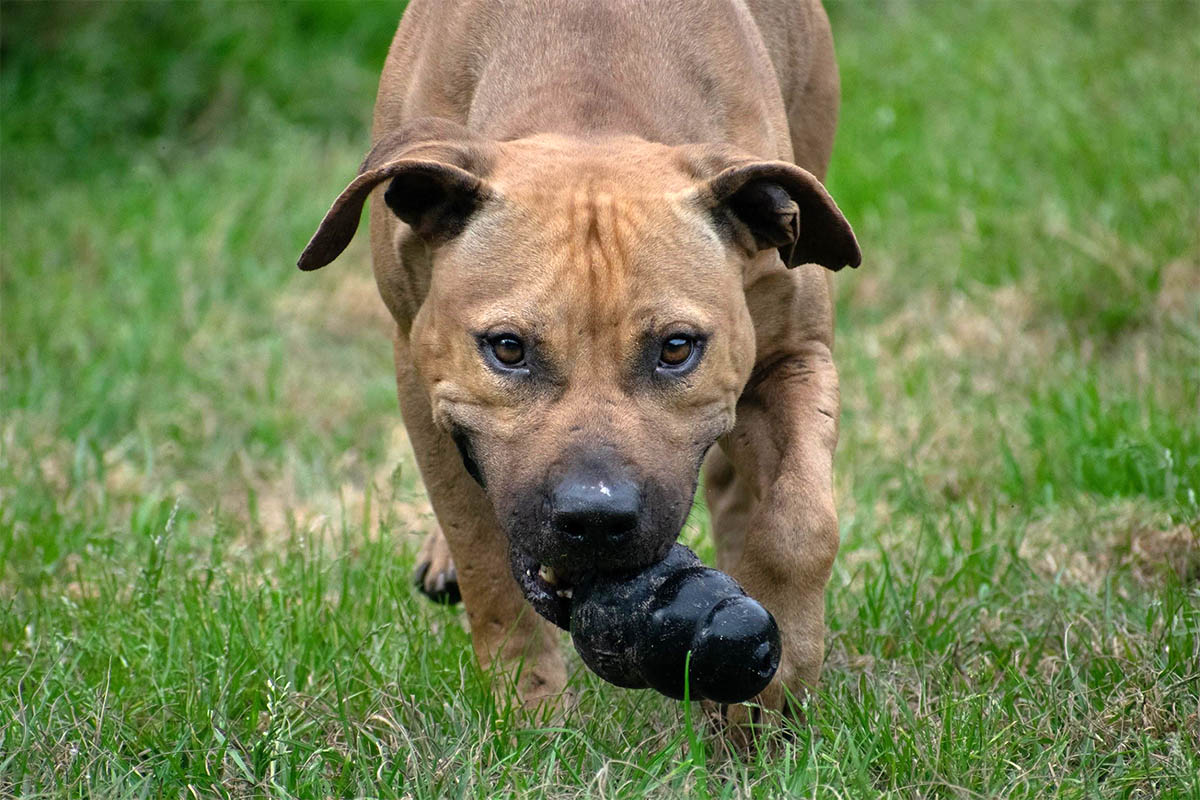
Ease of Cleaning
An easy-to-clean shelter will make your staff a lot happier and make it easier to manage dogs well with limited staff. However, it has some other huge advantages:- Free up staff time for enrichment. Time that staff doesn’t have to spend scrubbing, spraying, and otherwise cleaning kennels can be time that they spend working with dogs in enrichment activities.
- Enable dogs to have food distributing toys. Food distributing toys can be messy, which can lead staff to avoid letting dogs have them since they have to clean up after. A facility with great drainage that is extremely easy to spray down will make it more likely that dogs can have enrichment toys
- Reduce the spread of disease. Kennels that make thorough cleaning quick and easy make it less likely that contagion will be spread from one kennel to another and makes it easier to thoroughly decontaminate infected kennels.
Kennel Enrichment
Just because a dog is in a shelter and has to spend a lot of time in a kennel doesn’t mean that they can’t get enrichment. Dogs that seem aggressive, extremely fearful, or are otherwise unmanageable at intake can benefit a lot from enrichment right in their kennels.Mark Positive Behavior
Shelter dogs exhibit a wide range of behaviors when they are kenneled for the first time. Many of those behaviors are undesirable, like aggressively barking, circling, or hiding.
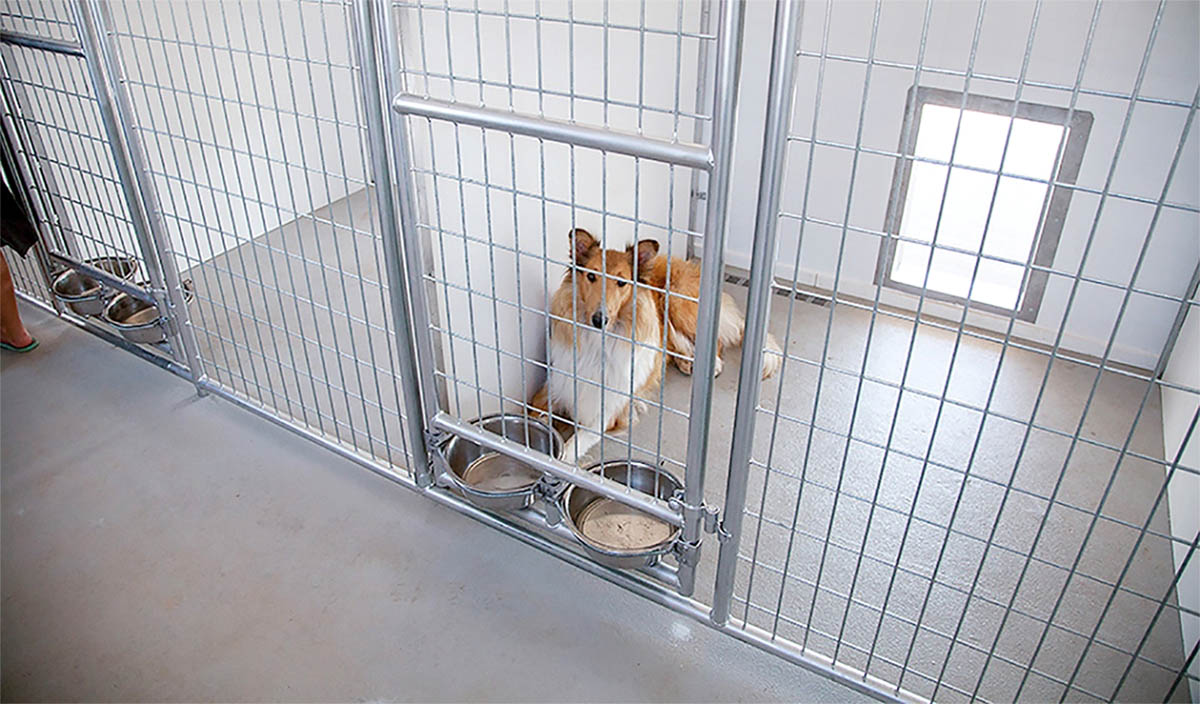 However, inevitably there will be moments when shelter dogs behave in ways that you like, like standing calmly or showing positive social signals. Whenever shelter dogs show these desirable behaviors, volunteers and staff can mark the behavior by giving the dog a signal and a reward.
It’s very helpful to use clickers with shelter dogs since it is a consistent sound across different handlers. A great technique is to hang a clicker and a small pail of treats outside of every kennel.
Place a card explaining what behavior to reward and how to reward it. You may be amazed by how quickly your rescue or shelter changes from a loud, chaotic place to a kennel full of well-behaved dogs.
Provide Food and Treats Through Food Distributing toys
Every dog should always have fresh water and an essential portion of food provided in sturdy stainless steel bowls that can be easily accessed from the outside.
However, inevitably there will be moments when shelter dogs behave in ways that you like, like standing calmly or showing positive social signals. Whenever shelter dogs show these desirable behaviors, volunteers and staff can mark the behavior by giving the dog a signal and a reward.
It’s very helpful to use clickers with shelter dogs since it is a consistent sound across different handlers. A great technique is to hang a clicker and a small pail of treats outside of every kennel.
Place a card explaining what behavior to reward and how to reward it. You may be amazed by how quickly your rescue or shelter changes from a loud, chaotic place to a kennel full of well-behaved dogs.
Provide Food and Treats Through Food Distributing toys
Every dog should always have fresh water and an essential portion of food provided in sturdy stainless steel bowls that can be easily accessed from the outside.

 However, some of a dog’s daily allotment of food along with affordable treats like cooked carrots, sweet potatoes, or chicken should be offered through a food distributing toy.
Sturdy toys like the Kong Extreme can provide dogs hours of enrichment. Chewing on a food distributing toy allows dogs to act out natural instincts like chewing, ripping, and chasing without causing destruction to themselves or the kennel.
It is naturally soothing for dogs to chew and lick, so offering food distributing toys can significantly reduce the anxiety level in the kennel.
However, some of a dog’s daily allotment of food along with affordable treats like cooked carrots, sweet potatoes, or chicken should be offered through a food distributing toy.
Sturdy toys like the Kong Extreme can provide dogs hours of enrichment. Chewing on a food distributing toy allows dogs to act out natural instincts like chewing, ripping, and chasing without causing destruction to themselves or the kennel.
It is naturally soothing for dogs to chew and lick, so offering food distributing toys can significantly reduce the anxiety level in the kennel.
Create Predictability
Shelter dogs are experiencing a time of extreme change, and they don’t know what’s going to happen next. The anxiety of not knowing what will happen can cause a lot of stress for shelter dogs. Therefore, it’s good to provide as much predictability as possible in a dog’s routine. You may not always be able to plan when everything will happen, but you can at least place rituals around activities to help dogs understand what’s going on:Coming Out of the Kennel
Once you’ve had some time to assess a shelter dog in the kennel, it’s time to begin giving them some walks and yard time. Dogs benefit hugely from time outside the kennel to run around and play, even if it’s only a few minutes every day. However, dogs often get extremely worked up about coming out of the kennel. This can be an opportunity for bad behavior to develop and can even cause excitement to turn into aggression. By building a ritual into coming out of the kennel, you can reduce the excitement. Have anyone taking out shelter dogs ask for calm and give dogs a reward before they’re allowed out of the kennel. Rewards should be given when dogs are calm as the handler is approaching, when the gate is open, and when the leash is put on. Ideally, you will have a second space to contain dogs in case they escape from the kennel during this ritual.Feeding
Dogs should get a basic allotment of food in the mornings and evenings at approximately the same time. This schedule will help your dog organize their understanding of how time is passing throughout the rest of the day. It’s also a good idea to always provide food distributing toys at about the same time a day when calm is most desirable. For many shelters, this is during peak viewing hours. It’s true that dogs will be distracted from guests by chewing on the toys, but seeing a dog engage with a toy can prompt adopters to be more interested in them. Dogs are less likely to show negative behavior while they’re working on their food distributing toys.Training
Name and reward basic commands from the moment dogs come into the kennels. At the beginning, you will just be marking calm behavior, but as time goes on, you can begin marking specific behaviors. If a dog sits, click, name the behavior and offer the dog a treat. If the dog lies down, do the same with that command. By doing this consistently, you can develop a relatively obedience-trained dog before they ever come out of the kennel and into the play yard. When dogs do go into the play yard, they’re more likely to listen to handlers. Kennel dogs learn that their relationship with humans should involve listening to and responding to commands and that they will be rewarded for this kind of attention and behavior.Build bonds
One of the most overlooked potentials of a dog’s time in the kennel is the opportunity to bond with a human handler. Feeding, training, and marking behaviors all help to build bonds between humans and dogs. It is helpful for bond-building if there is as much consistency as possible in the dog-handler relationship. You may find that you have more success in providing positive behavioral enrichment for shelter dogs if you have staff and volunteers handle the same dogs consistently. Consider assigning a particular quadrant of the shelter or particular kennels to the same handlers.




